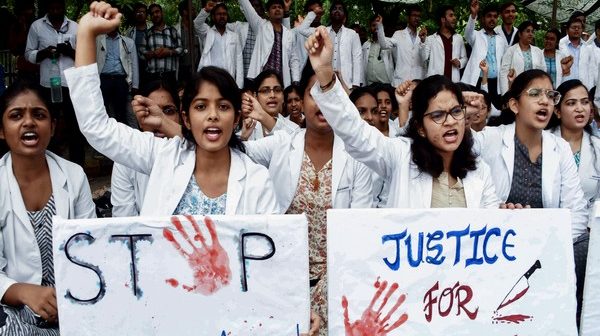The brutal rape and murder of a trainee doctor at Kolkata’s RG Kar Medical College in August 2024 has sparked widespread protests across India. The public outrage, amplified by the vandalism of the hospital and the national doctors’ strike, presents a significant challenge for the Indian government. With the nation demanding justice and greater protection for women, the government is under pressure to respond effectively. This analysis explores the possible strategies the Indian government can employ to manage the ongoing unrest and address the root causes of the crisis.
Immediate Legal and Investigative Actions
The Indian government, through the Central Bureau of Investigation (CBI), has already initiated a probe into the incident. Fast-tracking the investigation and ensuring transparency can help to restore public confidence. Arresting those responsible, both for the crime and the subsequent vandalism, and bringing them to justice swiftly would demonstrate the government’s commitment to law and order. The Kolkata Police have arrested several individuals involved in the hospital vandalism, but further efforts are required to reassure the public that all those responsible for the crime and its aftermath will be held accountable.
Strengthening Law Enforcement and Security
Ensuring the safety of women in public spaces, particularly in institutions like hospitals, is crucial. The government could consider deploying additional security forces at sensitive locations, especially those under public scrutiny. Moreover, improving the training of local police in handling such crises, both in terms of crime prevention and crowd control during protests, can prevent situations from escalating further. The request by opposition leaders for paramilitary security at RG Kar Medical College underscores the perceived inadequacy of local law enforcement, and such measures might be necessary to prevent further violence.
Engaging with Protesters and Civil Society
Direct engagement with the protesting doctors, civil society organizations, and the broader public can help de-escalate tensions. Government representatives, including those from the Health and Home Ministries, should meet with protest leaders to discuss their demands and work towards a mutually acceptable resolution. Ensuring that doctors and hospital staff feel heard and supported by the government will be key to ending the strike and restoring normalcy to healthcare services across the country.
Policy and Legislative Reforms
The government could use this moment to announce or expedite policy reforms aimed at improving the safety of women in India. This might include the introduction of stricter penalties for sexual crimes, increased funding for women’s safety programs, and the establishment of more specialized courts to handle cases of sexual violence. Additionally, reviewing and potentially enhancing the provisions of the existing Sexual Harassment at Workplace Act could provide further protection for women in professional environments.
Public Communication and Media Management
Managing the narrative through effective communication is essential. The government must ensure that accurate information about the steps being taken is disseminated widely to counter misinformation and prevent further unrest. Regular updates from official channels about the progress of the investigation and any new security measures would help to reassure the public. Moreover, involving respected public figures or women’s rights activists in the communication strategy could lend credibility to the government’s efforts and help bridge the trust gap.
Long-Term Educational and Social Initiatives
Beyond immediate responses, the government should consider launching long-term educational campaigns aimed at changing societal attitudes towards women. This could involve integrating gender sensitization programs into school curricula and public awareness campaigns that challenge misogyny and promote gender equality. Collaboration with NGOs and community organizations in these efforts could extend the reach and impact of such initiatives.
Conclusion
The Kolkata rape case has not only highlighted the ongoing issue of violence against women in India but also the public’s demand for accountability and systemic change. The Indian government must respond with a multifaceted strategy that addresses both the immediate crisis and the underlying issues that contribute to such tragedies. By taking decisive legal action, enhancing security, engaging with stakeholders, and promoting long-term societal change, the government can begin to restore public trust and prevent similar incidents in the future.





